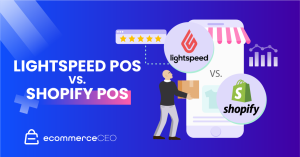 Author By Miva |
Author By Miva |- Posted on
- • April 29, 2019

Looking to increase traffic to your store? You’re not alone…not at all. With countless merchants competing for searcher attention, it can be tough to lock down the search engine real estate you need to keep visitors coming to your site. That’s why we’ve put together the following list of SEO best practices for eCommerce merchants.

1. Keep Your Users Happy
A great user experience does more than just make visitors happy–it keeps them on site long enough to form a positive opinion of your brand, discover more products, and convert. This reduces your bounce rate and increases average time on page, improving your site’s search rankings.
Put your user experience to the test by assuming the role of a prospective customer. Is key information readily available when you land on your site? Are the steps leading up to purchase clear and easy? Is the checkout process streamlined or littered with potential distractions? Discovering and eliminating points of friction in your site’s user experience is essential to improving its searchability and reputation.
2. Optimize Your Category Pages
Proper category page organization is important for eCommerce stores, especially those that sell a wide variety of products. If you don’t optimize your category pages, you could end up with competing pages that sabotage your SEO techniques and strategy. To ensure that your category pages are using SEO best practices, create a scalable keyword and linking model that you can use across all categories and product types. Don’t forget to work whatever keywords you want to rank for into each category page’s H1 tag, page description, and page title.
3. Create Product FAQs
In the age of Amazon, simply selling products doesn’t cut it. To stay competitive, independent merchants need to offer searchers more than just something they can buy. Creating a detailed and informative FAQ for your most important products can set your brand apart as a source of information and education. FAQ pages have the added benefit of giving you the opportunity to target important keywords in a non-promotional, searcher-friendly way.

4. Focus on Responsiveness
Your customers are mobile…what about your site? An increasing amount of eCommerce purchases are made via mobile devices and Google has been ranking based on responsiveness for years—any site not optimized for mobile usage is losing out on traffic and sales. With digital natives aging into purchasing roles, this is as true for B2B sites as it is for retail ones. If you want to rank competitively and stay relevant, you will need an eCommerce platform and site design that can adapt to use on mobile devices.
5. Highlight User-Generated Content
Positive user-generated content comes with myriad benefits for your eCommerce store. Reviews, testimonials, and product endorsements provide the fresh, user-friendly content search engines prioritize while lending authority to your products and claims. If you’re looking for ways to get more user-generated content on your site, consider launching an incentive program to persuade your best customers to leave reviews.
6. Implement 301 Redirects
Things move quickly in the world of eCommerce. Between new product launches, temporary promotions, and catalog restructuring, eCommerce sites are subject to almost constant change. While this can be great for agility, it can also lead to a pileup of old, dead-end, and outdated pages. These pages can take up valuable search engine real estate, inflate bounce rates, and damage site reputation. Fortunately, cleaning these up is as simple as implementing a 301 redirect to another page. If you have any expired or unused product pages clogging up your site, redirecting users to a newer and more consistently updated page is probably the best option for SEO best practices.
7. Use SEO-Safe Faceted Search
For eCommerce stores with high SKU counts and complex catalogs, a well-structured faceted search tool can be a game-changer. A poorly-executed faceted search feature, on the other hand, can lead to disaster.
Experts have come up with several SEO best practices for setting up faceted search, but not all of these will work for every eCommerce site. Consider your store’s unique needs and the development resources at your disposal before adopting any particular faceted search strategy.



